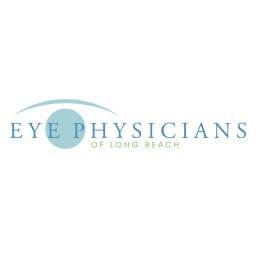Blog post by: Eye Physicians of Long Beach

Age related macular degeneration (AMD) occurs when the macula, the central part of the retina, within the eye begins to deteriorate. The macula is vital to clear vision because it is the part of the eye that has the highest visual acuity. It is made up of light-sensitive tissue just like the rest of the retina but has its own unique characteristics. As people age, they become more vulnerable to this disease, which can unfortunately progress suddenly and with astonishing speed in some cases. A recent study published in the November 5 issue of Investigative Ophthalmology & Visual Science looked at using measurements obtained using Ocular Coherent Tomography to make predictions about who will develop this faster, more severe form of the disease called wet macular degeneration. Because AMD can worsen rapidly, in some patients but it may take years in others, the question about how often to monitor a given patient is an important one.
Macular Degeneration results from the buildup of deposits under the retina called drusen. These drusen eventually interfere with the metabolism of the retina and cause its deterioration. In the wet Macular Degeneration, fragile blood vessels result in the leaking of fluid in the retinal area, potentially causing severe permanent damage and even legal blindness. Early detection means better eyesight in those patients. Therapeutic interventions can really help these patients.
An annual eye exam may not be sufficient for patients who are at risk for wet Macular Degeneration due to the fact that serious vision impairment is possible in a short amount of time. This makes it important to determine which patients require additional monitoring to carefully watch for signs of AMD. New prediction methods may even enable ophthalmologists to save patients from blindness.
In particular, in this study, researchers found Optical Coherence Tomography (OCT) measurements to be able to predict which patients have a higher risk of progression. Optical Coherence Tomography (OCT) is a non-contact medical imaging technology similar to ultrasound and MRI. With OCT, reflected light is used to produce detailed cross-sectional and 3D images of the eye. By studying images of patients’ eyes from quarterly examinations, researchers were able to pinpoint specific warning signs that indicated Age-related Macular Degeneration , rather than waiting for the patient to notice and report serious symptoms of the disease. Specifically, they found that patient age is a significant factor in progression. They also found that maximum height of detected drusen was a significant factor in progression within 18 months and that the total area of drusen had significantly higher values for progressing within 30 months. They also found that the eyes predicted to progress had a much higher progression rate than eyes predicted to not progress at any given time. This study suggests that patients should have OCT imaging
Since Age-related Macular Degeneration is the leading cause of blindness in American senior citizens, this study has implications for millions of patients. With image indicators that caution ophthalmologists that wet Age-related Macular Degeneration could soon occur, patients can be closely observed and cared for to avoid irreversible vision loss and blindness. The images used are those that the patient would normally have taken at the time of their exam, so there are no extra procedures or invasiveness required. At Eye Physicians of Long Beach we have the latest model OCT and will conduct this testing when necessary to help you understand your disease and prognosis.
Though researchers continue to look for more detail on the connections between indicators and onset of wet AMD, the ability to more effectively calculate risk of Age-related Macular Degeneration is a vitally important advance to share with patients. These risk assessments and monitoring guidelines could make a significant impact on the lives of the patients who are treated for wet Age-related Macular Degeneration before vision impairment progresses to serious stages.
